#middleware components
Text
Event-Driven Design Demystified: Concepts and Examples
🚀 Discover how this cutting-edge architecture transforms software systems with real-world examples. From e-commerce efficiency to smart home automation, learn how to create responsive and scalable applications #EventDrivenDesign #SoftwareArchitecture
In the world of software architecture, event-driven design has emerged as a powerful paradigm that allows systems to react and respond to events in a flexible and efficient manner. Whether you’re building applications, microservices, or even IoT devices, understanding event-driven design can lead to more scalable, responsive, and adaptable systems. In this article, we’ll delve into the core…
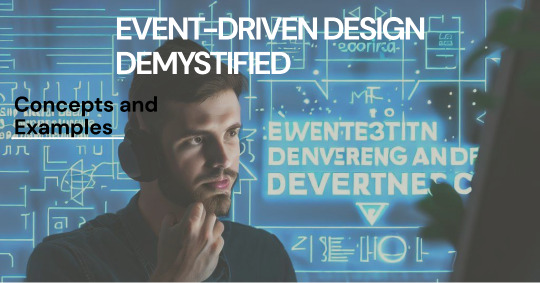
View On WordPress
#Asynchronous Communication#Decoupling Components#E-commerce Order Processing#Event Broker Paradigm#Event Sources and Consumers#Event-driven architecture#Event-Driven Examples#Event-Driven Paradigm#Event-Triggered Workflows#Microservices and Events#Middleware in Event-Driven Design#Modular Development#Reactive Systems#Real-Time Responsiveness#Scalable Software Systems#Smart Home Automation#Social Media Notifications#Software Design Patterns#System Event Handling#User Experience Enhancement
1 note
·
View note
Text
SAP Basis
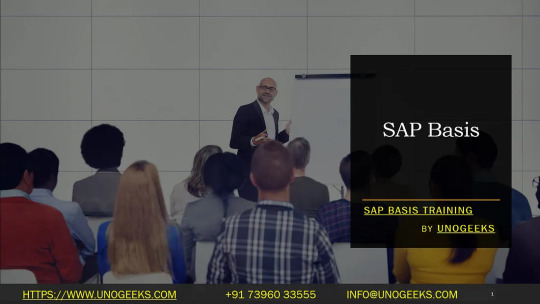
SAP Basis: The Backbone of Your SAP Landscape
SAP applications form the core of many modern enterprises. Financial data, customer interactions, supply chain logistics, and many other critical business operations rely on SAP’s robust solutions. But what powers these solutions? That’s where SAP Basis comes in.
What is SAP Basis?
In simple terms, SAP Basis is the technological foundation upon which SAP applications are built and run. It’s like the operating system specifically for your SAP world. Basis provides a set of middleware components and administration tools that ensure your SAP applications function smoothly and reliably.
Key Responsibilities of an SAP Basis Administrator
SAP Basis administrators are the unsung heroes of the SAP world, responsible for a wide range of tasks:
Installation and Configuration: Basis admins handle the initial installation and setup of SAP systems, ensuring they’re configured correctly for your business needs.
System Administration: They perform ongoing tasks like monitoring system health, applying patches and upgrades, and managing system resources.
Database Management: This includes database installation, configuration, backup and restore processes, and overall database health.
Performance Tuning: Basis admins identify bottlenecks, optimize settings, and ensure applications run at their peak.
User Management: Creating and managing user accounts, assigning roles and authorizations for secure access control.
Troubleshooting: When problems arise, these experts step up to diagnose and resolve issues promptly, minimizing downtime for the business.
Transport Management: They oversee the movement of code changes and configuration updates between different SAP environments (e.g., development, testing, production).
Components of SAP Basis
Some core components that make up SAP Basis include:
SAP NetWeaver: The core technology platform that provides the foundation for different SAP products.
ABAP Workbench: The development environment for creating custom ABAP code (SAP’s primary programming language).
SAP GUI: The graphical user interface used to interact with SAP systems.
Transport Management System: Tools for managing and tracking changes across SAP environments.
Solution Manager: A centralized platform for system monitoring, diagnostics, and support tools.
Why is SAP Basis Important?
Reliability and Stability: A well-managed SAP Basis system means your critical business applications will run smoothly, minimizing disruptions and downtime.
Performance: Basis expertise ensures that your SAP applications are optimized to deliver their best, promoting efficient business operations.
Security: Basis includes a suite of tools to manage user access, protect sensitive data, and ensure compliance with security standards.
Agility: A flexible Basis layer gives your business the ability to adapt to changing needs by scaling SAP deployments or introducing new components.
Becoming an SAP Basis Administrator
A career in SAP Basis is both challenging and rewarding. If you have a knack for technical troubleshooting, problem-solving, and enjoy working with complex systems, here’s how to get started:
Get a Technical Foundation: A background in computer science, database administration, or system administration is a strong starting point.
Gain SAP Expertise: Take SAP Basis training courses and explore online resources and tutorials.
Certifications: Consider getting SAP-certified in Basis administration to validate your skills.
Hands-on Experience: Look for internship or entry-level positions that allow you to work on real SAP systems.
The Future of SAP Basis
As SAP continues to evolve into a cloud-centric platform, Basis will adapt too. Knowledge of cloud technologies, containerization, and automation will become increasingly valuable for Basis administrators.
youtube
You can find more information about SAP BASIS in this SAP BASIS Link
Conclusion:
Unogeeks is the №1 IT Training Institute for SAP BASIS Training. Anyone Disagree? Please drop in a comment
You can check out our other latest blogs on SAP BASIS here — SAP BASIS Blogs
You can check out our Best In Class SAP BASIS Details here — SAP BASIS Training
Follow & Connect with us:
— — — — — — — — — — — -
For Training inquiries:
Call/Whatsapp: +91 73960 33555
Mail us at: [email protected]
Our Website ➜ https://unogeeks.com
Follow us:
Instagram: https://www.instagram.com/unogeeks
Facebook: https://www.facebook.com/UnogeeksSoftwareTrainingInstitute
Twitter: https://twitter.com/unogeek
2 notes
·
View notes
Text
Top 10 Laravel Development Companies in the USA in 2024
Laravel is a widely-used open-source PHP web framework designed for creating web applications using the model-view-controller (MVC) architectural pattern. It offers developers a structured and expressive syntax, as well as a variety of built-in features and tools to enhance the efficiency and enjoyment of the development process.

Key components of Laravel include:
1. Eloquent ORM (Object-Relational Mapping): Laravel simplifies database interactions by enabling developers to work with database records as objects through a powerful ORM.
2. Routing: Laravel provides a straightforward and expressive method for defining application routes, simplifying the handling of incoming HTTP requests.
3. Middleware: This feature allows for the filtering of HTTP requests entering the application, making it useful for tasks like authentication, logging, and CSRF protection.
4. Artisan CLI (Command Line Interface): Laravel comes with Artisan, a robust command-line tool that offers commands for tasks such as database migrations, seeding, and generating boilerplate code.
5. Database Migrations and Seeding: Laravel's migration system enables version control of the database schema and easy sharing of changes across the team. Seeding allows for populating the database with test data.
6. Queue Management: Laravel's queue system permits deferred or background processing of tasks, which can enhance application performance and responsiveness.
7. Task Scheduling: Laravel provides a convenient way to define scheduled tasks within the application.
What are the reasons to opt for Laravel Web Development?
Laravel makes web development easier, developers more productive, and web applications more secure and scalable, making it one of the most important frameworks in web development.
There are multiple compelling reasons to choose Laravel for web development:
1. Clean and Organized Code: Laravel provides a sleek and expressive syntax, making writing and maintaining code simple. Its well-structured architecture follows the MVC pattern, enhancing code readability and maintainability.
2. Extensive Feature Set: Laravel comes with a wide range of built-in features and tools, including authentication, routing, caching, and session management.
3. Rapid Development: With built-in templates, ORM (Object-Relational Mapping), and powerful CLI (Command Line Interface) tools, Laravel empowers developers to build web applications quickly and efficiently.
4. Robust Security Measures: Laravel incorporates various security features such as encryption, CSRF (Cross-Site Request Forgery) protection, authentication, and authorization mechanisms.
5. Thriving Community and Ecosystem: Laravel boasts a large and active community of developers who provide extensive documentation, tutorials, and forums for support.
6. Database Management: Laravel's migration system allows developers to manage database schemas effortlessly, enabling version control and easy sharing of database changes across teams. Seeders facilitate the seeding of databases with test data, streamlining the testing and development process.
7. Comprehensive Testing Support: Laravel offers robust testing support, including integration with PHPUnit for writing unit and feature tests. It ensures that applications are thoroughly tested and reliable, reducing the risk of bugs and issues in production.
8. Scalability and Performance: Laravel provides scalability options such as database sharding, queue management, and caching mechanisms. These features enable applications to handle increased traffic and scale effectively.
Top 10 Laravel Development Companies in the USA in 2024
The Laravel framework is widely utilised by top Laravel development companies. It stands out among other web application development frameworks due to its advanced features and development tools that expedite web development. Therefore, this article aims to provide a list of the top 10 Laravel Development Companies in 2024, assisting you in selecting a suitable Laravel development company in the USA for your project.
IBR Infotech

IBR Infotech excels in providing high-quality Laravel web development services through its team of skilled Laravel developers. Enhance your online visibility with their committed Laravel development team, which is prepared to turn your ideas into reality accurately and effectively. Count on their top-notch services to receive the best as they customise solutions to your business requirements. Being a well-known Laravel Web Development Company IBR infotech is offering the We provide bespoke Laravel solutions to our worldwide customer base in the United States, United Kingdom, Europe, and Australia, ensuring prompt delivery and competitive pricing.
Additional Information-
GoodFirms : 5.0
Avg. hourly rate: $25 — $49 / hr
No. Employee: 10–49
Founded Year : 2014
Verve Systems
Elevate your enterprise with Verve Systems' Laravel development expertise. They craft scalable, user-centric web applications using the powerful Laravel framework. Their solutions enhance consumer experience through intuitive interfaces and ensure security and performance for your business.
Additional Information-
GoodFirms : 5.0
Avg. hourly rate: $25
No. Employee: 50–249
Founded Year : 2009
KrishaWeb

KrishaWeb is a world-class Laravel Development company that offers tailor-made web solutions to our clients. Whether you are stuck up with a website concept or want an AI-integrated application or a fully-fledged enterprise Laravel application, they can help you.
Additional Information-
GoodFirms : 5.0
Avg. hourly rate: $50 - $99/hr
No. Employee: 50 - 249
Founded Year : 2008
Bacancy
Bacancy is a top-rated Laravel Development Company in India, USA, Canada, and Australia. They follow Agile SDLC methodology to build enterprise-grade solutions using the Laravel framework. They use Ajax-enabled widgets, model view controller patterns, and built-in tools to create robust, reliable, and scalable web solutions
Additional Information-
GoodFirms : 4.8
Avg. hourly rate: $25 - $49/hr
No. Employee: 250 - 999
Founded Year : 2011
Elsner
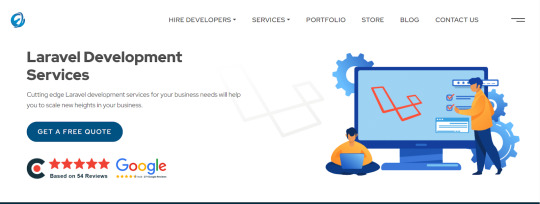
Elsner Technologies is a Laravel development company that has gained a high level of expertise in Laravel, one of the most popular PHP-based frameworks available in the market today. With the help of their Laravel Web Development services, you can expect both professional and highly imaginative web and mobile applications.
Additional Information-
GoodFirms : 5
Avg. hourly rate: < $25/hr
No. Employee: 250 - 999
Founded Year : 2006
Logicspice

Logicspice stands as an expert and professional Laravel web development service provider, catering to enterprises of diverse scales and industries. Leveraging the prowess of Laravel, an open-source PHP framework renowned for its ability to expedite the creation of secure, scalable, and feature-rich web applications.
Additional Information-
GoodFirms : 5
Avg. hourly rate: < $25/hr
No. Employee: 50 - 249
Founded Year : 2006
Sapphire Software Solutions

Sapphire Software Solutions, a leading Laravel development company in the USA, specialises in customised Laravel development, enterprise solutions,.With a reputation for excellence, they deliver top-notch services tailored to meet your unique business needs.
Additional Information-
GoodFirms : 5
Avg. hourly rate: NA
No. Employee: 50 - 249
Founded Year : 2002
iGex Solutions

iGex Solutions offers the World’s Best Laravel Development Services with 14+ years of Industry Experience. They have 10+ Laravel Developer Experts. 100+ Elite Happy Clients from there Services. 100% Client Satisfaction Services with Affordable Laravel Development Cost.
Additional Information-
GoodFirms : 4.7
Avg. hourly rate: < $25/hr
No. Employee: 10 - 49
Founded Year : 2009
Hidden Brains
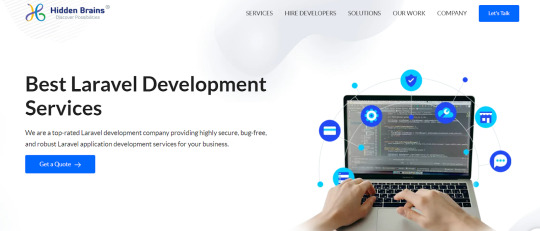
Hidden Brains is a leading Laravel web development company, building high-performance Laravel applications using the advantage of Laravel's framework features. As a reputed Laravel application development company, they believe your web application should accomplish the goals and can stay ahead of the rest.
Additional Information-
GoodFirms : 4.9
Avg. hourly rate: < $25/hr
No. Employee: 250 - 999
Founded Year : 2003
Matellio
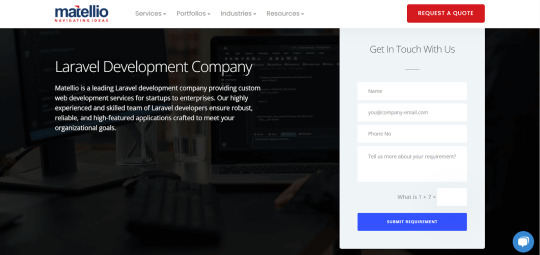
At Matellio, They offer a wide range of custom Laravel web development services to meet the unique needs of their global clientele. There expert Laravel developers have extensive experience creating robust, reliable, and feature-rich applications
Additional Information-
GoodFirms : 4.8
Avg. hourly rate: $50 - $99/hr
No. Employee: 50 - 249
Founded Year : 2014
What advantages does Laravel offer for your web application development?
Laravel, a popular PHP framework, offers several advantages for web application development:
Elegant Syntax
Modular Packaging
MVC Architecture Support
Database Migration System
Blade Templating Engine
Authentication and Authorization
Artisan Console
Testing Support
Community and Documentation
Conclusion:
I hope you found the information provided in the article to be enlightening and that it offered valuable insights into the top Laravel development companies.
These reputable Laravel development companies have a proven track record of creating customised solutions for various sectors, meeting client requirements with precision.
Over time, these highlighted Laravel developers for hire have completed numerous projects with success and are well-equipped to help advance your business.
Before finalising your choice of a Laravel web development partner, it is essential to request a detailed cost estimate and carefully examine their portfolio of past work.
#Laravel Development Companies#Laravel Development Companies in USA#Laravel Development Company#Laravel Web Development Companies#Laravel Web Development Services
2 notes
·
View notes
Text
Platform as a Service (PaaS)

Platform as a Service (PaaS) is a cloud computing service model that provides a platform allowing customers to develop, run, and manage applications without the complexity of building and maintaining the underlying infrastructure. PaaS provides a comprehensive environment that includes development tools, middleware, and runtime services to streamline the application development and deployment process. Here are key features and aspects of PaaS:
Key Features of PaaS:
Development Tools:
PaaS offers a set of tools and services for application development, including integrated development environments (IDEs), version control, and testing frameworks.
Middleware:
PaaS includes middleware services that facilitate communication and integration between different components of an application. This can include databases, messaging systems, and more.
Runtime Services:
PaaS provides runtime services such as operating systems, web servers, and runtime environments. Developers can focus on writing code without worrying about the underlying infrastructure.
Scalability:
PaaS platforms typically offer automatic scaling to handle changes in application demand. This ensures that resources are allocated efficiently, and the application can handle varying workloads.
Multi-Tenancy:
PaaS platforms often support multi-tenancy, allowing multiple users or organizations to share the same infrastructure and resources while maintaining isolation.
Integration with Services:
PaaS allows integration with various external services, such as databases, messaging systems, authentication services, and more, to enhance the functionality of applications.
Deployment and Management:
PaaS simplifies the deployment process, offering tools for application deployment, version control, and monitoring. It often includes management tools for application lifecycle management.
Advantages of PaaS:
Faster Development:
PaaS accelerates the development process by providing pre-built tools and services, reducing the need for developers to manage infrastructure details.
Cost Efficiency:
Developers can focus on coding, while the PaaS provider handles infrastructure maintenance and management, leading to cost savings.
Scalability and Flexibility:
PaaS platforms enable easy scaling of applications based on demand, providing flexibility to handle varying workloads.
Reduced Complexity:
Developers don't need to worry about managing the underlying infrastructure, operating systems, or runtime environments, reducing complexity and allowing them to focus on writing code.
Collaboration:
PaaS facilitates collaboration among development teams, as they can work on the same platform and easily share resources.
Automatic Updates:
PaaS providers handle updates and patches for underlying software, ensuring that the platform is up-to-date and secure.
Resource Optimization:
PaaS platforms optimize resource usage, allocating resources based on application requirements to avoid overprovisioning.
Rapid Prototyping:
Developers can quickly prototype and experiment with ideas without the need to set up and configure infrastructure.
Cloud computing training course in Pune
3 notes
·
View notes
Text
Full Stack Developer Course Syllabus at SyntaxLevelUp
Embarking on a journey to become a Full Stack Developer requires mastering a wide range of skills, from front-end technologies to back-end systems, and everything in between. At SyntaxLevelUp, our Full Stack Developer course is designed to equip you with the comprehensive knowledge and hands-on experience necessary to excel in the tech industry. Here’s an in-depth look at our syllabus:

Module 1: Introduction to Full Stack Development
- Overview of Full Stack Developer training in pune: Understanding the roles and responsibilities of a Full Stack Developer.
- Development Environments: Setting up your development environment with tools like VS Code, Git, and GitHub.
- Version Control: Mastering Git and GitHub for collaboration and version management.
Module 2: Front-End Development
HTML & CSS
- HTML Fundamentals: Elements, attributes, forms, tables, and semantic HTML.
- CSS Basics: Selectors, properties, values, and CSS Grid/Flexbox.
- Responsive Design: Media queries, mobile-first design, and frameworks like Bootstrap.
- Advanced CSS: Animations, transitions, and preprocessors like SASS.
JavaScript
- JavaScript Essentials: Variables, data types, operators, and control structures.
- DOM Manipulation: Selecting and manipulating DOM elements, event handling.
- ES6+ Features: Arrow functions, destructuring, spread/rest operators, and modules.
- Asynchronous JavaScript: Promises, async/await, and AJAX.
Front-End Frameworks and Libraries
- React Basics: Components, JSX, props, state, and lifecycle methods.
- Advanced React: Hooks, context API, and performance optimization.
- State Management: Introduction to Redux and managing state in complex applications.
- Routing: Implementing React Router for single-page applications (SPAs).
Module 3: Back-End Development
Node.js & Express.js
- Node.js Fundamentals: Setting up Node.js, understanding the event loop, and NPM.
- Express.js Basics: Setting up Express, routing, middleware, and RESTful APIs.
- Database Integration: Connecting to databases like MongoDB, using Mongoose for schema definitions and data manipulation.
Databases
- SQL Databases: Introduction to SQL, relational database concepts, and working with MySQL/PostgreSQL.
- NoSQL Databases: Understanding NoSQL, document databases, and working with MongoDB.
Module 4: Full Stack Integration
- API Development: Creating and consuming RESTful APIs, understanding HTTP methods and status codes.
- Authentication & Authorization: Implementing user authentication with JWT, OAuth, and secure password storage.
- File Handling: Uploading and managing files in a web application.
Module 5: DevOps and Deployment
- Deployment Strategies:
Deploying applications using platforms like Heroku, AWS, and Netlify.
- CI/CD Pipelines: Introduction to Continuous Integration and Continuous Deployment with tools like Jenkins and GitHub Actions.
- Containerization: Docker basics and creating Docker images for consistent development environments.
Module 6: Capstone Project
- Project Planning: Designing and planning a full-stack training in pune application from scratch.
- Implementation: Building the project using the skills learned throughout the course.
- Testing & Debugging: Writing unit tests, integration tests, and using debugging tools.
- Presentation: Preparing and presenting your project to peers and instructors for feedback.
Additional Resources
- Soft Skills Development: Communication, teamwork, and problem-solving.
- Career Guidance: Resume building, portfolio development, and interview preparation.
Conclusion
Our Full Stack Developer course in pune at SyntaxLevelUp is meticulously crafted to provide you with a solid foundation in both front-end and back-end development. By the end of this course, you will be equipped with the skills and confidence to build and deploy full-stack applications, paving the way for a successful career in tech. Enroll today and take the first step towards becoming a proficient Full Stack Developer!
SyntaxLevelUp offers top-tier full stack training in Pune, designed to transform beginners into proficient developers. Our full stack developer classes in Pune cover a comprehensive curriculum, including HTML, CSS, JavaScript, React, and Node.js. Recognized as the best full stack developer course in Pune, our program combines theoretical knowledge with practical projects. Whether you're looking for full stack developer courses in Pune or full stack classes in Pune, SyntaxLevelUp provides hands-on experience, expert mentorship, and career guidance to ensure your success in the tech industry. Join us and elevate your skills with the finest full stack training in Pune.
#full stack training in pune#full stack developer classes in pune#best full stack developer course in pune#full stack developer course in pune#full stack courses in pune#full stack classes in pune#full stack developer#full stack training
0 notes
Text
Tailoring AI Technology to Meet Unique Business Needs

In an era dominated by technological advancements, artificial intelligence (AI) has emerged as a cornerstone of innovation. However, the effectiveness of AI in enhancing business operations hinges on its customization. Custom AI solutions, designed to meet the unique requirements of specific business environments, offer unmatched advantages that standard AI packages can't provide. As businesses strive to gain a competitive edge, tailored AI development services are not just beneficial but essential.
The Necessity of Custom AI in Modern Business
Artificial Intelligence (AI) has permeated various sectors, revolutionizing how businesses operate by offering improved efficiency, predictive insights, and automated decision-making. Yet, the diversity of challenges across industries such as healthcare, finance, and manufacturing demands solutions that transcend the capabilities of generic AI systems. That is why custom AI solutions are so important.
Unlike off-the-shelf AI products, custom AI is engineered to align precisely with the unique operational processes, goals, and data environments of each business. This bespoke approach ensures that AI applications are not just implemented but are fully integrated and optimized to maximize business value. For instance, in healthcare, custom AI can improve patient outcomes through personalized treatment plans generated by analyzing individual health data, while in finance, it can enhance fraud detection systems by learning from specific transaction patterns.
The transition from generic to custom AI solutions marks a pivotal move towards more strategic and effective use of technology, enabling businesses to not only address their immediate needs but also to innovate and adapt to future challenges.
Key Components of Effective Custom AI Development
Developing custom AI solutions requires a deep understanding of both technology and the specific industry it serves. Tailored artificial intelligence development services focus on several crucial components to ensure that the end product is not only functional but also transformative for the client’s business.
Integration with Existing Systems
One of the foremost considerations in custom AI development is the seamless integration with existing business systems and workflows. AI solutions must complement and enhance existing technologies without disrupting current operations. This involves meticulous system analysis, planning, and the use of APIs and middleware for smooth interoperability.
Data Handling and Processing
At the heart of AI is data. Effective custom AI solutions depend heavily on robust data management strategies, including data collection, cleaning, and processing. Ensuring high-quality, relevant data is crucial for training AI models accurately. This includes setting up secure, scalable cloud infrastructures that can handle large volumes of data efficiently.
Model Customization and Training
AI models for custom solutions are often built from scratch or significantly modified from pre-existing models to address specific challenges. This involves selecting the right algorithms, tuning hyperparameters, and continually training the model with updated data sets to improve accuracy and performance.
Continuous Learning and Adaptation
The ability to adapt and learn from new data and changing conditions is what makes an AI solution genuinely valuable. Implementing mechanisms for ongoing learning and adjustment ensures that the AI system evolves in tandem with the business, providing long-term benefits and adaptability.
By focusing on these key components, custom AI developers can create solutions that are not only tailored to specific business needs but also scalable and future-proof, ensuring that they continue to deliver value as the business grows and its needs evolve.
Implementation Strategies for Custom AI
The successful implementation of custom AI solutions hinges on a well-defined strategy that aligns with business objectives and technological capabilities. A strategic approach not only facilitates smoother AI implementation but also ensures that the AI solution delivers tangible benefits.
Collaborative Planning
Effective custom AI implementation begins with collaborative planning involving stakeholders from various departments of the organization. This inclusive approach helps in understanding the diverse needs and expectations, ensuring the AI solution is comprehensive and addresses all critical areas.
Agile Development and Iteration
Adopting an agile development framework is crucial for custom AI projects. This methodology allows for iterative testing and refinement of AI models, enabling developers to quickly adapt to changes and incorporate feedback. Agile practices ensure that the AI solution remains aligned with business goals throughout the development process.
Scalability and Security
As businesses grow, their AI solutions should scale accordingly. Planning for scalability from the outset is essential to accommodate increasing data volumes and computational needs. Equally important is ensuring the security of AI systems, particularly when handling sensitive data. Robust security protocols and compliance with relevant regulations protect the organization's data and the integrity of the AI system.
Monitoring and Continuous Improvement
After deployment, continuous monitoring of the AI system’s performance is necessary to measure its impact and effectiveness. This ongoing evaluation helps in identifying areas for improvement and updating the system to handle new challenges as they arise. Effective monitoring frameworks and tools are indispensable for maintaining the relevance and efficiency of custom AI solutions.
By following these implementation strategies, organizations can maximize the potential of their custom AI solutions, ensuring they not only meet current needs but are also primed for future challenges and opportunities.
Mindfire Solutions: Pioneering Custom AI/ML Development
Mindfire Solutions stands at the forefront of AI/ML development services, specializing in creating bespoke AI solutions that cater to the unique challenges and objectives of each client. Our approach to custom AI development combines cutting-edge technology, deep domain expertise, and a client-centric strategy to deliver solutions that not only solve problems but also drive innovation and business growth.
Tailored Expertise
At Mindfire Solutions, we understand that every industry and business faces distinct challenges. Our team of AI experts leverages this understanding to design AI solutions that are perfectly aligned with the specific requirements of each client. Whether it's automating complex processes, enhancing decision-making with predictive analytics, or delivering personalized customer experiences, our solutions are tailored to meet the diverse needs of our clients.
Cutting-Edge Technologies
We employ the latest AI technologies and methodologies to ensure our solutions are at the cutting edge of the tech landscape. Our expertise spans various AI disciplines, including machine learning, deep learning, natural language processing, and computer vision. This technological versatility enables us to tackle a wide array of challenges across different sectors effectively.
A Partner in Innovation
More than just a service provider, Mindfire Solutions acts as a strategic partner to our clients. We collaborate closely with businesses to understand their vision and goals, ensuring our AI solutions not only address current needs but also anticipate future demands. Our commitment to innovation and excellence makes us a trusted partner in the journey toward digital transformation.
Sustainable AI Solutions
We are dedicated to developing AI solutions that are sustainable and ethical. Our development practices adhere to the highest standards of data privacy and ethical AI use, ensuring that our solutions are responsible and beneficial for all stakeholders involved.
By choosing Mindfire Solutions for your custom AI needs, you partner with a leader in AI innovation, equipped to provide you with intelligent solutions that are as dynamic and unique as your business.
Conclusion
Custom AI solutions offer businesses the opportunity to harness the full potential of artificial intelligence technology tailored specifically to their needs. From integration with existing systems to continuous adaptation and learning, custom AI can transform operations, drive growth, and create sustainable competitive advantages. With Mindfire Solutions, businesses gain a partner that not only understands the intricacies of AI but also how to align them with your specific business objectives, ensuring a future-proof and impactful implementation.
#ai development services#artificial intelligence development services#ai implementation#ai/ml development services
0 notes
Text
MERN Stack Development: Tools for Effective Development
Introduction
The MERN stack development offers a detailed framework to build web applications using a cohesive set of technologies. There are four main components of this Stack, which are MongoDB, Express.js, React.js and Node.js and all of them work together to provide a more balanced structure to handle data storage, back-end routing, a front-end rendering as well as a server-side processing.
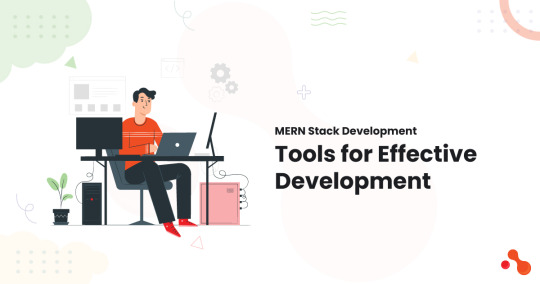
As digital products are increasingly in need of an agile and scalable solution, the MERN developers should integrate tools and strategies which allows flexibility in the development.
In this article, we’ll learn about effective tools for MERN Development, what is a MERN development and what are the Best Practices to follow
What is a MERN Stack Development
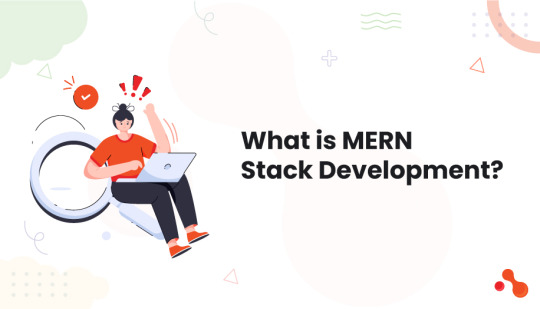
MERN stack development means the process of building web applications using MERN Stack architecture, a set of JavaScript based technologies. There are four components in a MERN stack development, which are as follows:
MongoDB: A NoSQL database that stores data as JSON-like documents, providing flexibility in how data is structured.
Express.js: A lightweight web application framework that facilitates routing and middleware management, simplifying back-end logic.
React: A front-end JavaScript library that allows for component-based UI design, making it easier to build, modify, and maintain complex web interfaces.
Node.js: A runtime environment that runs JavaScript on the server side, supporting non-blocking I/O operations and facilitating scalable server-side processing.
Moreover, MERN Stack Development offers a comprehensive framework for building full-stack web applications, leveraging JavaScript for both client-side and server-side development, making it efficient.
Now, let’s understand what makes MERN Stack Development efficient.
What makes a MERN Stack Development efficient?

MongoDB: Providing Flexibility at the Database Level
Document-Oriented Structure: A MongoDB’s schema-less document model enables for flexibility in data storage. You can store varying structures in the same collection thus making it ideal for different project requirements and fast iterations.
Aggregation Framework: A MongoDB’s aggregation pipeline allows developers to transform and filter data with ease. This feature is crucial for adapting to different data processing needs over time.
Sharding: This feature enables horizontal scaling, thus distributing data across multiple servers. Moreover, it allows your database to handle growth in traffic and data volumes without sacrificing the performance.
The second tool in the list is Express.js. Let’s understand it briefly.
Express.js: Flexible Back-End Routing
Middleware: An Express.js offers a powerful middleware system which enables you to integrate a variety of functionality seamlessly into an application. This modular approach would allow you to make rapid adjustments in your app’s back end.
RESTful APIs: The MERN Stack framework simplifies the creation of RESTful APIs that offers a flexible way for the back end to communicate with other parts of the system. Additionally, this structure also allows you to accommodate changes to front-end requirements or integrations with third-party services.
Routing: An Express.js’s routing system provides you a direct way to define various routes for an application. This flexibility would help you when you are changing or adding new endpoints as the project evolves.
React: Adaptive Front-End Development
Component-Based Architecture: React’s component based design provides you a modular and reusable code. Further, this approach lets you manage any changes to the user interface effectively, thus allowing a quick update or an addition to the front end.
Virtual DOM: A virtual DOM implementation speeds up the UI rendering by reducing the impact of a frequent change or a dynamic content on a performance.
State Management: Tools like Redux or Context API can manage the state of React applications, ensuring that the data flow remains consistent even as UI components change.
Node.js: Scalable Server-Side Processing
Event-Driven Architecture: A Node.js’s non-blocking I/O and an event-driven model makes multiple requests handling possible concurrently, which is essential for any scalable back-end operation.
NPM Packages: A Node Package Manager allows a vast repository of packages by offering tools for everything from a database integration to testing. This bunch of extra resources would enhance development flexibility thus enabling you to quickly incorporate new functionalities.
Clustering: Node.js supports clustering, which allows applications to use multiple CPUs for processing tasks concurrently, enabling scalability and efficient load distribution.
Now, let’s understand the Best Practices of achieving flexibility with MERN Stack Development.
3 Best Practices for MERN Stack Development
Version Control
Using tools like Git is necessary to manage code changes effectively. Moreover, a Git offers branching and merging capabilities, thus allowing teams to develop new features or experiment without disrupting the main codebase. Doing this will ensure that there are various iterations and changes that can be tracked, reviewed and implemented in a controlled manner.
Code Reviews: By implementing a compulsory code review process can help in enhancing the practice, thus ensuring that each change is vetted by another developer, thus reducing the risk of introducing any bug or security vulnerability.
Continuous Integration: This helps in integrating a new code into the main branch regularly, thus allowing for immediate testing and an early detection of potential issues.
Microservices Architecture
Breaking down your application into microservices provides flexibility by allowing independent updates to different modules . This architecture minimizes the impact of changes to one part of the system on others, providing the following benefits:
Independent Development: Microservices enable different teams to work on separate parts of the application concurrently, enhancing productivity and reducing bottlenecks.
Scalability: This architecture supports horizontal scaling, where individual services can be scaled independently based on demand, optimizing resource usage .
Modular Updates: Microservices allow for easier updates and maintenance, as changes can be made to specific services without impacting the entire system.
CI/CD Pipeline
A continuous integration and a continuous deployment pipeline streamlines the testing and deployment process, enabling a rapid iteration and adaptation.
Automated Testing: CI/CD pipelines include automated testing suites that run tests on each new code commit, ensuring that changes do not introduce new bugs or break existing functionality.
Automated Deployment: Once testing is complete, the pipeline can deploy new code directly to production or staging environments, reducing manual intervention and expediting the release cycle.
Versioning and Rollback: CI/CD pipelines help manage version control and allow for quick rollbacks in case of issues, ensuring minimal disruption to users and clients.
By implementing these practices, MERN stack developers can create applications that are flexible, resilient, and scalable, adapting to changing requirements and evolving market trends efficiently.
Now, let’s understand how Acquaint Softtech can help in MERN Development
How Acquaint Softtech can help in MERN Development
Acquaint Softtech is a company based in India, specializing in software development outsourcing and IT Staff Augmentation Services. We primarily work with the Laravel framework to build websites and software that meet our clients' specific needs. If your company operates remotely and needs to hire remote developers, we can help you find the right talent quickly. Our onboarding process is straightforward, enabling you to integrate developers into your team within 48 hours.
We offer competitive rates for our remote developer services, charging just $15 per hour. We're also expanding our expertise to include MEAN and MERN Stack Development, providing an opportunity to hire MEAN stack developers and hire MERN stack developers from our team to enhance efficiency and innovation in your projects.
Wrapping Up!
Flexibility is key to the success of MERN stack development projects, ensuring they can adapt to changing requirements and evolving market trends. By leveraging the right tools and best practices, developers can create applications that are resilient, scalable, and adaptive, meeting both current needs and future demands effectively.
FAQs MERN Stack Development:
What is the MERN stack?
The MERN stack is a set of JavaScript-based technologies including MongoDB, Express.js, React, and Node.js, used for full-stack web development.
How does MongoDB contribute to MERN stack development?
MongoDB provides flexibility at the database level through its document-oriented structure, aggregation framework, and sharding features.
What is the significance of Express.js in MERN development?
Express.js offers flexible back-end routing, a middleware system, and simplifies the creation of RESTful APIs, making it easier to handle various functionalities.
Why is version control important in MERN stack development?
Version control, through tools like Git, helps manage code changes effectively, providing branching and merging capabilities, allowing controlled tracking, reviewing, and implementation of iterations.
How does Acquaint Softtech assist with MERN stack development?
Acquaint Softtech offers software development and IT staff augmentation services, with expertise in MERN stack development, helping businesses find skilled developers quickly and affordably.
0 notes
Text
The 8 Best IPTV Solutions For 2024 [Top Rated Platforms]
The Finest 8 IPTV Solutions That You Can Find For Yourself:
Searching for the appropriate IPTV solution can be challenging especially when you have plenty of options to choose from. Hence to make it simpler we’ve broken down the best 9 IPTV platform providers to show you what they’re likely to offer you according to your video streaming business needs.
Solution #1 – IPTVGREAT
IPTVGREAT is the leading solution provider of IPTV with more than many years of experience in the rapidly-increasing market. Without any integration difficulties, IPTVGREAT provides you the best business solution which enables telecom companies and service providers to instantly start their video streaming services and generate quick revenue.
Some of its highlighted features are:
Own all video essentials like streaming equipment with its licenses
Absolute nil need for monthly pay just with SaaS
An ideal solution to target a wide customer base access the globe
Pay as you grow and flourish with the user subscription base
Solution #2 – IPTVRESALE
IPTVRESALE is a TV solution for service specialists where they can secure, make, and convey content with added highlights and administrations. Their headend video servers permit you to transfer, make, or embed recordings/programs in your own or TV channels that comprise VOD movies and TV shows.
Different highlights of the IPTVRESALE platform are:
Centralized set-top media box management
Multi-Screen device-friendly with multilingual UI
Content access protection with one-time URL
TV watching statistics with a customizable interface
Solution #3 – IPTVGANG
The video platform of IPTVGANG integrates with the elements of the streaming ecosystem that your business is readily reliable to interact with. When you search how to start an IPTV media business IPTVGANG assists you to build your platform right from the scratch, creating an add-on for service network providers all under your business name, and much more.
Some of its striking features are:
Fastest and inexpensive solutions with clear web interface
Flexible video content management system and track its popularity
Study region-specific countries to see recurring ROI source
Supervise uptime and other server-based data like CPU, GPU, etc
Solution #4 – IPTVUNLOCK
IPTVUNLOCK is one of the leading IPTV streaming platforms with content protection and advanced data solutions. They offer an extensive broad scope of content discovery, security, video monetization, and delivery of end-to-end solutions for shaping a smarter TV experience with pioneer expertise of many years of industry leadership.
Here are its eminent features:
Cloud TV service with out-of-the-box native TV apps
Supports linear and non-linear content across any screen
Focus on core business infrastructure escalating scalability
Plug & play your live content layered with robust license delivery
Solution #5 – IPTVFOLLOW
IPTVFOLLOW carries its presence around the globe with a deep understanding of IPTV technologies. After precisely studying each IPTV project IPTVFOLLOW shapes them with an entire state-of-the-art developed solution. They deliver cutting-edge IPTV systems catered to different industry verticals such as Hospitality, Hospitals, Ships, Residential areas.
Some of its high-rated interactive tv services are:
IPTVFOLLOW’s smart TV technology delivers IPTV apps & widgets
Provides middleware apps like PayTV, Jukebox, Games, TV shop, etc
Supports various set-top-boxes, as standalone or with TV display
Easy customization & upgrades in a wide range of IPTV content library
Solution #6 – IPTVTOPS
IPTVTOPS has a friendly & dedicated team that serves you with its ready-made components in IPTV and provides its assistance to reach your targets in no time. Their mission is to help right from small-scale to medium telecom operators to steadily take leaps from the market of traditional cable TV to IPTV as well as OTT. Assure to have secure software & hardware support tailor-made according to your business needs with a scalable architecture.
Take a look at some of its highlighted features:
Delivers managed or on-premise platform integration solutions
Set up dream IPTV middleware system end-to-end & hassle-free
Ensure content security with DRM protocols like Fairplay, Widewine, etc
Scalable CDNs limitlessly with cloud or hybrid solutions
Solution #7 – IPTVGEAR
IPTVGEAR which had made its way from the year 2006 efficiently provides highly-scalable inclusive of low latency IPTV & OTT solution. It has progressively redefined the UI/UX through powerful video technology ensuring the best video streaming platforms across all device.IPTVGEAR powers more than a million users through 20000+ live streaming channels helping to monetize their value-graded content. ipt
Here are some of its path-striking features to consider:
Delivers best firestick IPTV platform with end-to-end on-premise/on cloud integration
Highly intuitive middleware using technologies like microservice architecture
User-friendly interface with interactive features like DVR, Smart Catch-Up, etc
Insightfully increase subscription revenue with IPTVGEAR’s real-time analytics
Solution #8 – MUVI
Flexible IPTV Platform and Native Apps for Mobile & TV
The Internet protocol technology delivered through Muvi has designed its digital television service with branded websites & apps. To widen its cross-platform reach they provide you with options to entertain your TV audience across platforms like Amazon Fire TV app, Android TV, Roku Chromecast, iOS, etc. If you are thinking about how to start your own IPTV services, Muvi can be your go-to partner for furnishing innovative video services in no time.
Glimpse through some of its packed features:
Muvi lets you stream live events like shows, tournaments on any device
Get to showcase 24*7 broadcasted content with live online TV channel
100% native code with the latest template for all OTT TV app
Enable users to watch content offline in different resolutions
How Much Does it Cost to Start an IPTV Service?
At the end of the day, when it comes to procuring a white label OTT platform for your brand reflection everywhere approximate price estimation depends on numerous factors like:
Thorough understanding of providers as what they can offer
Suitable features that are noteworthy to monetize your visitors
The added advantage of IPTV app development elevating global presence
Integral customization that is required in your niche business
Furthermore, the growing number of smart TV sets a great challenge for traditional content delivery chains that creates the biggest opportunity for content owners or producers to bypass middle distributors and reach their consumers directly. To capture high amounts of revenue all of these essential factors determine to shape your best IPTV & infrastructure platform.
Conclusion
The preservation of business profitability depends on the maximized churn rate reduction and an extended portfolio with value-added services. When you start hunting for how to start your very own IPTV business, it is important to glimpse through these pivotal factors mentioned above along with in-depth market research in order to favor you with attracting customers using enhanced online television services.
0 notes
Text
Learning MERN Developing Dynamic Web Applications from the Ground level
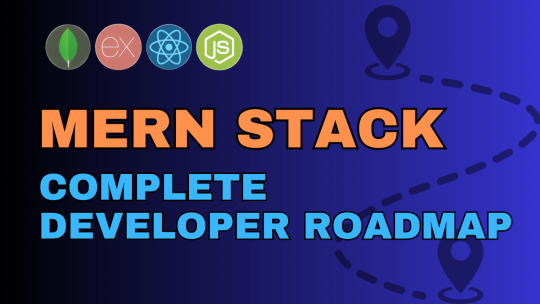
We’ll begin by exploring the fundamentals of the MERN stack, its components, and how they work together to build powerful web applications. You'll gain insights into the core technologies - MongoDB, Express.js, React, and Node.js - and understand their roles in modern web development.
Setting Up Your Development Environment
Prepare to get right into the practical work! We'll walk you through configuring your development environment for MERN stack development in this module. After setting up your workspace and installing the required software, you'll be ready to begin developing your first MERN application.
Constructing a RESTful API with Express and Node.js
Discover how to use Node.js and Express.js to build a solid backend for your MERN applications. We'll go over things like managing HTTP requests, routing, middleware, and integrating MongoDB for data storing and retrieval. After completing this module, you'll have a firm grasp on creating RESTful APIs.
Working with MongoDB
Dive deep into MongoDB, a NoSQL database that complements the MERN stack development courseperfectly. You'll learn how to design schemas, perform CRUD operations, and leverage MongoDB's powerful querying capabilities to efficiently manage your application's data.
Building Dynamic User Interfaces with React
Learn how to use React to build dynamic, interactive user interfaces for your MERN apps. You'll discover the fundamental ideas and industry-best techniques for creating scalable front-end applications, from component-based architecture to state management with Redux or Context API.
Integrating Frontend with Backend
Bring together the frontend and backend of your MERN application seamlessly. Learn how to make API calls from React components to fetch and display data from your Express.js server. You'll also explore authentication and authorization techniques to secure your application.
Deployment and Continuous Integration
Upload your MERN application to a cloud platform like AWS or Heroku to get it ready for the real world. We'll also go over continuous integration and delivery (CI/CD) techniques, which help you automate the deployment process and guarantee that your users receive updates without any problems.
Advanced Topics and Best Practices
we'll delve into advanced topics and best practices for MERN stack development. From performance optimization to error handling and debugging, you'll learn strategies to enhance the scalability, reliability, and maintainability of your MERN applications.
Building a Social Media Platform
Take your MERN abilities to another level by starting a large-scale real-world project. Using WebSockets, you will create a social media platform from the ground up with features like posting, commenting, like, and real-time updates. You will use every idea and method you have studied in earlier courses to construct a fully functional application during this module.
Testing and Quality Assurance
Learn the importance of testing and quality assurance in MERN stack development course. Explore different types of testing including unit testing, integration testing, and end-to-end testing, and discover tools and frameworks such as Jest, Mocha, and Chai. By writing comprehensive tests, you'll ensure the reliability and stability of your MERN applications.
Performance Optimization and Scalability
Optimize the performance of your MERN applications to deliver fast and responsive user experiences. You'll learn techniques for reducing load times, optimizing database queries, caching data, and implementing server-side rendering (SSR) with React. Additionally, we'll discuss strategies for scaling your application to handle increased traffic and user demand.
DevOps and Infrastructure as Code
Gain insights into DevOps practices and the concept of Infrastructure as Code (IaC) for managing your MERN application's infrastructure efficiently. You'll explore tools such as Docker and Kubernetes for containerization and orchestration, as well as infrastructure automation using Terraform or AWS CloudFormation.
Security Best Practices
Ensure the security of your MERN applications by understanding common vulnerabilities and implementing best practices. Topics covered include data validation and sanitization, protecting against cross-site scripting (XSS) and SQL injection attacks, implementing secure authentication and authorization mechanisms, and securing communication over HTTPS.
Monitoring and Logging
Monitor the health and performance of your MERN applications in production environments. Learn how to set up monitoring tools such as Prometheus and Grafana to track key metrics, as well as logging frameworks like Winston or ELK stack (Elasticsearch, Logstash, Kibana) for aggregating and analyzing logs to troubleshoot issues effectively.
Continuous Learning and Career Growth
Wrap up the course by exploring avenues for continuous learning and career growth in the field of MERN stack development course. Whether it's staying updated with the latest technologies and trends, contributing to open-source projects, or pursuing advanced certifications, you'll be equipped with the knowledge and resources to thrive in your career journey.
Conclusion
With the information you've learned from MERN stack development course, you're prepared to take on difficult tasks, overcome real-world challenges, and positively influence the web development sector. Whether your goal is to become a full-stack developer, launch your own firm, or just get more experience in the IT industry, the skills and knowledge you've acquired here will be a great foundation for success. But education never stops. Technology is a vibrant, ever-changing field that presents a myriad of opportunities for growth and innovation. Never stop asking questions, look into new technologies and methods, and never give up on honing your craft. Seize every opportunity to broaden your knowledge and skills, whether it is through more in-depth coursework, involvement in open-source projects, or earning further training and certifications.
0 notes
Text
Demystifying Cloud Architecture: Understanding the Key Components
Cloud architecture is the backbone of modern digital infrastructure, enabling businesses to scale, innovate, and operate efficiently in today’s dynamic market. At the heart of cloud architecture are several key components that work together to deliver a robust and reliable computing environment. In this article, we’ll dive deep into these components, exploring their roles and importance in shaping the modern IT landscape.
Cloud Service Providers (CSPs):
CSPs like Amazon Web Services (AWS), Microsoft Azure, and Google Cloud Platform (GCP) offer a range of cloud services, including computing power, storage, and networking resources.
These providers have data centers distributed globally, ensuring high availability and low latency for users worldwide.
2. Infrastructure as a Service (IaaS):
IaaS provides virtualized computing resources over the internet. It includes virtual machines, storage, and networking capabilities.
Users can provision and manage these resources on-demand, paying only for what they use, which makes it cost-effective and scalable for businesses of all sizes.
3. Platform as a Service (PaaS):
PaaS offers a platform for developers to build, deploy, and manage applications without worrying about underlying infrastructure.
It provides tools and services like development frameworks, databases, and middleware, speeding up the application development process and enhancing productivity.
4. Software as a Service (SaaS):
SaaS delivers software applications over the internet on a subscription basis. Users can access these applications from any device with an internet connection.
Popular SaaS examples include email services like Gmail, collaboration tools like Microsoft 365, and customer relationship management (CRM) software like Salesforce.
5. Cloud Storage:
Cloud storage services offer scalable and durable storage solutions for data, files, and backups.
Features like data redundancy, encryption, and access controls ensure data security and compliance with regulatory requirements.
6. Networking:
Cloud networking encompasses virtual networks, load balancers, and content delivery networks (CDNs) that optimize traffic routing and enhance performance.
Software-defined networking (SDN) technologies enable dynamic and automated network configuration, improving agility and scalability.
7. Security and Compliance:
Cloud architecture includes robust security measures such as firewalls, encryption, and identity access management (IAM) to protect data and infrastructure from cyber threats.
Compliance frameworks like GDPR, HIPAA, and SOC 2 ensure that cloud services adhere to industry regulations and standards.
8. Monitoring and Management:
Cloud monitoring tools provide visibility into resource utilization, performance metrics, and cost analysis.
Automated management solutions enable efficient resource allocation, scaling, and optimization based on workload demands.
In conclusion, understanding cloud architecture and its key components is essential for businesses looking to harness the full potential of cloud computing. By leveraging the scalability, flexibility, and reliability of cloud services, organizations can accelerate digital transformation initiatives and stay competitive in today’s rapidly evolving technology landscape.
1 note
·
View note
Text
Data Center Operations: Navigating the Backbone of Digital Infrastructure
In the ever-expanding landscape of digital technologies, data center operations stand as the cornerstone of efficient and reliable IT infrastructure. From storing mission-critical data to ensuring seamless connectivity, data center operations play a pivotal role in the functioning of modern organizations. This article explores the intricacies of data center operations, ranging from key components and best practices to challenges, technological solutions, and future trends.
Introduction to Data Center Operations
Data center operations refer to the management and maintenance of hardware, software, and network infrastructure within a data center facility. These operations are essential for ensuring the availability, reliability, and security of data center services, which form the foundation of modern IT infrastructure. From powering cloud computing platforms to supporting e-commerce transactions, data center operations underpin a myriad of digital services and applications.
Key Components of Data Center Operations
Data center operations encompass several key components, including hardware management, software management, and network management. Hardware management involves the provisioning, installation, and maintenance of physical servers, storage systems, and networking equipment. Software management entails the deployment, configuration, and updating of operating systems, middleware, and application software. Network management focuses on monitoring, configuring, and optimizing network infrastructure to ensure seamless connectivity and data transmission.
Best Practices in Data Center Operations
To maintain efficient and reliable data center operations, organizations must adhere to best practices such as regular maintenance and monitoring, disaster recovery planning, and energy efficiency measures. Regular maintenance and monitoring help identify and address potential issues before they escalate into major problems, minimizing downtime and ensuring optimal performance. Disaster recovery planning involves developing strategies and procedures to recover data and restore operations in the event of a disaster or outage. Energy efficiency measures aim to reduce the environmental impact of data centers by optimizing power usage, cooling systems, and hardware configurations.
Challenges in Data Center Operations
Data center operations face numerous challenges, including scalability, security threats, and compliance with regulations. As data volumes continue to grow exponentially, data centers must scale their infrastructure to meet increasing demand while maintaining performance and reliability. Security threats such as malware, ransomware, and insider attacks pose significant risks to sensitive data and critical systems, necessitating robust security measures and protocols. Compliance with regulations such as GDPR, HIPAA, and PCI DSS adds complexity to data center operations, requiring organizations to implement stringent controls and procedures to protect data privacy and ensure regulatory compliance.
Technological Solutions for Efficient Operations
To address these challenges, organizations are leveraging technological solutions such as automation, virtualization, and artificial intelligence (AI). Automation streamlines routine tasks and workflows, reducing manual intervention and improving operational efficiency. Virtualization enables the consolidation of multiple virtual servers on a single physical machine, maximizing resource utilization and simplifying management. AI technologies such as machine learning and predictive analytics help optimize data center operations by analyzing vast amounts of data, identifying patterns and anomalies, and providing actionable insights for decision-making.
Importance of Skilled Personnel
In addition to technology, skilled personnel are essential for effective data center operations. Data center operators play a critical role in managing and maintaining the infrastructure, ensuring uptime, and responding to incidents and emergencies. Training and certification programs provide operators with the knowledge and skills needed to perform their roles effectively, stay abreast of emerging technologies and industry trends, and address challenges and complexities inherent in data center operations.
Case Studies of Successful Data Center Operations
Several organizations have demonstrated excellence in data center operations, implementing innovative strategies and best practices to achieve optimal performance, reliability, and security. Examples include tech giants like Google, Amazon, and Microsoft, which have invested heavily in data center infrastructure and operations to support their cloud computing services and digital platforms. These companies have implemented advanced technologies, rigorous security measures, and robust operational processes to ensure the availability, scalability, and security of their data center services.
Future Trends in Data Center Operations
Looking ahead, several trends are shaping the future of data center operations. Edge computing, which involves processing data closer to the source of generation, is gaining traction as organizations seek to reduce latency and improve responsiveness for real-time applications. Green data centers, designed to minimize environmental impact through energy-efficient technologies and renewable energy sources, are becoming increasingly prevalent as organizations prioritize sustainability and environmental responsibility. Hybrid cloud adoption, which combines on-premises infrastructure with public and private cloud services, is on the rise as organizations seek to leverage the benefits of cloud computing while maintaining control over sensitive data and workloads.
Conclusion
In conclusion, data center operations play a critical role in ensuring the efficiency, reliability, and security of modern IT infrastructure. By adhering to best practices, leveraging technological solutions, and investing in skilled personnel, organizations can overcome challenges and achieve optimal performance in their data center operations. Looking ahead, emerging trends such as edge computing, green data centers, and hybrid cloud adoption will continue to shape the future of data center operations, driving innovation and efficiency in the digital age.
0 notes
Text
Connecting the Dots: The Importance of Lab Analyzers Interfacing

In the intricate tapestry of laboratory operations, the seamless integration of lab analyzers is paramount. From chemistry analyzers to hematology instruments, each component plays a vital role in the diagnostic process. However, the true magic happens when these disparate pieces come together through lab analyzers interfacing. This synergy not only streamlines workflow but also enhances the efficiency and accuracy of diagnostic testing.
At the heart of lab analyzers interfacing lies instrument integration. Gone are the days of siloed instruments operating in isolation. Modern laboratories demand interconnectedness, where analyzers communicate harmoniously to deliver cohesive results. Through advanced integration protocols, laboratories can orchestrate a symphony of analyses, maximizing throughput and minimizing turnaround times.
Yet, integration is merely the first step. The crux of lab analyzers interfacing lies in data transfer. Patient samples traverse a labyrinth of analyzers, each generating a plethora of data points. Efficient data transfer mechanisms ensure that these valuable insights flow seamlessly from one instrument to another, without loss or distortion. Whether it's transmitting test results or patient demographics, the integrity of data transfer is sacrosanct.

However, the path to seamless interfacing is fraught with challenges, chief among them being compatibility testing. Not all analyzers speak the same language or adhere to uniform data standards. Compatibility testing is akin to deciphering a complex code, ensuring that disparate instruments can understand and interpret each other's signals. Through meticulous testing protocols, laboratories can preempt compatibility issues and preemptively resolve them.
Moreover, effective interface configuration is essential for optimizing analyzers' interoperability. Customized configurations tailor interfaces to the unique needs of each laboratory, ensuring smooth data exchange and minimizing errors. Whether it's defining data formats or establishing communication protocols, meticulous interface configuration is the linchpin of successful lab analyzers interfacing.
In the realm of lab analyzers interfacing, middleware solutions serve as the bridge between disparate instruments. These software platforms harmonize data exchange, transcending the barriers of instrument heterogeneity. Middleware solutions not only facilitate seamless interfacing but also offer advanced functionalities such as result validation and autoverification, further enhancing laboratory efficiency and quality.
In conclusion, lab analyzers interfacing is the linchpin of modern laboratory operations, fostering synergy among disparate instruments and maximizing the efficiency and accuracy of diagnostic testing. Through the seamless integration of instruments, efficient data transfer mechanisms, meticulous compatibility testing, customized interface configurations, and middleware solutions, laboratories can unlock new frontiers of efficiency and excellence. As laboratories continue to evolve in tandem with technological advancements, the importance of lab analyzers interfacing will only grow, cementing its status as a cornerstone of diagnostic excellence.
#Instrument Integration#Data Transfer#Compatibility Testing#Interface Configuration#Middleware Solutions
0 notes
Text
Advanced Techniques for State Management in React: Redux vs. Context API
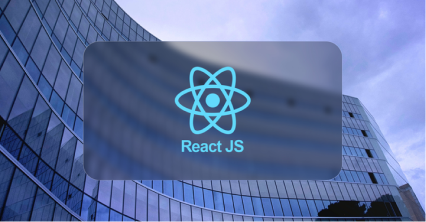
Introduction
State management is a crucial aspect of building robust and scalable React applications. Two popular approaches for managing state in React are Redux and the Context API. In this article, we will delve into advanced techniques for state management using Redux and the Context API, comparing their strengths, weaknesses, and best use cases to help you make informed decisions when choosing the right approach for your project.
Redux: A Predictable State Container
Redux is a powerful state management library that provides a predictable and centralized way to manage the state of your application. Key features of Redux include:
Single Source of Truth: Redux stores the entire state of your application in a single immutable object, making it easier to manage and debug.
Unidirectional Data Flow: Actions are dispatched to update the state, following a strict unidirectional data flow pattern.
Middleware Support: Redux allows you to apply middleware for handling asynchronous actions, logging, and more.
DevTools: Redux DevTools provide powerful debugging capabilities, allowing you to inspect and time-travel through your application’s state changes.
Context API: Built-in State Management in React
The Context API is a feature introduced in React that allows you to pass data through the component tree without having to pass props down manually at every level. Key aspects of the Context API include:
Provider-Consumer Pattern: The Context API uses a provider-consumer pattern to share data across components without prop drilling.
Simpler Setup: Compared to Redux, the Context API requires less boilerplate code and setup, making it easier to implement for smaller applications.
Lightweight: For simpler state management needs or when Redux might be overkill, the Context API provides a lightweight alternative.
Choosing the Right Approach
When deciding between Redux and the Context API for state management in your React application, consider the following factors:
Complexity: Redux is well-suited for complex applications with a large state that requires predictable updates. The Context API is more suitable for simpler state management needs.
Scalability: Redux’s centralized store and strict data flow make it easier to scale and maintain larger applications. The Context API may lead to performance issues with deeply nested components.
Developer Experience: Redux’s debugging tools and middleware support provide a robust developer experience. The Context API offers a simpler setup but may lack advanced debugging capabilities.
Conclusion
Both Redux and the Context API offer powerful solutions for state management in React, each with its own strengths and use cases. By understanding the advanced techniques and considerations for using Redux and the Context API, you can make informed decisions when architecting your React applications. Whether you choose the predictability of Redux or the simplicity of the Context API, mastering state management is essential for building efficient and maintainable React applications.
For businesses looking to optimize the navigation and user experience of their React applications, partnering with a reputable React.js development company can be a strategic investment. from these companies you can hire experienced React.js developers who specialize in leveraging tools like React Router to build efficient and user-friendly web applications.
0 notes
Text
Integrating Redux Toolkit into Your React TypeScript App: A Comprehensive Guide
It is essential to keep up with the latest tools and technologies in the field of front-end web development. One such tool that has gained popularity among developers is Redux Toolkit. Redux Toolkit is a package that simplifies the process of managing state in React applications, especially when using TypeScript.
In this blog, we'll guide you through the process of integrating the Redux Toolkit into your React TypeScript app, ensuring a smoother and more efficient development experience.
What is Redux Toolkit?
Redux Toolkit is a package that provides a set of tools and best practices for managing state in Redux applications. It includes utilities such as configureStore, which simplifies the setup of a Redux store, as well as createSlice, which allows you to define Redux slices with less boilerplate code. Redux Toolkit also includes middleware such as redux-thunk, which enables you to write asynchronous logic in your Redux reducers.
Benefits for Developers and Users:
Simplified State Management:
Redux Toolkit simplifies state management, ensuring a more predictable application state for a smoother user experience.
Improved Code Organization:
Encourages a structured approach to code organization, enhancing readability and maintainability.
Enhanced Debugging:
Includes Redux DevTools for real-time inspection and debugging of state changes.
Streamlined Asynchronous Actions:
Simplifies handling of asynchronous actions like API calls, improving performance.
Scalability:
Designed to scale with the application's complexity, maintaining performance and maintainability.
Type Safety:
Provides TypeScript integration for type safety, reducing runtime errors, and improving code quality.
Step 1: Installing Redux Toolkit
The first step in integrating the Redux Toolkit into your React TypeScript app is to install the package. You can use npm or yarn for this:
npm install @reduxjs/toolkit
or
yarn add @reduxjs/toolkit
Step 2: Setting Up the Redux Store
Next, you'll need to set up the Redux store in your application. Create a new file called store.ts and define your Redux store using the ‘configureStore’ function from Redux Toolkit:
import { configureStore } from '@reduxjs/toolkit';
import rootReducer from './reducers';
const store = configureStore({
reducer: rootReducer,
});
export default store;
Step 3: Creating Redux Slices
Redux Toolkit allows you to define Redux slices using the createSlice function. A slice is a collection of Redux reducers and actions that are related to a specific feature or part of your application. Here's an example of how you can create a slice for managing a user's authentication state:
import { createSlice } from '@reduxjs/toolkit';
const authSlice = createSlice({
name: 'auth',
initialState: {
isAuthenticated: false,
user: null,
},
reducers: {
login(state, action) {
state.isAuthenticated = true;
state.user = action.payload;
},
logout(state) {
state.isAuthenticated = false;
state.user = null;
},
},
});
export const { login, logout } = authSlice.actions;
export default authSlice.reducer;
Step 4: Connecting Redux to Your React Components
Finally, you'll need to connect your Redux store to your React components using the Provider component from the react-redux package. Use the Provider component to wrap your root component and pass your Redux store as a prop:
import React from 'react';
import ReactDOM from 'react-dom';
import { Provider } from 'react-redux';
import store from './store';
import App from './App';
ReactDOM.render(
<Provider store={store}>
<App />
</Provider>,
document.getElementById('root')
);
Integrating the Redux Toolkit into your React TypeScript app can help you manage state more effectively and improve the overall development experience. By following the steps outlined in this guide, you'll be able to seamlessly integrate Redux Toolkit into your app and take advantage of its powerful features. Remember to stay updated with the latest developments in front-end web development, as new tools and technologies are constantly emerging.
Ready to elevate your front-end services? For professional front-end services that will boost your app, get in touch with a front-end web development company right now. https://www.pravaahconsulting.com/front-end-development
0 notes
Text
Key MEAN Stack Development Trends for Modern Web Apps
Introduction
In the rapidly growing world of web development, staying ahead of the competition can be an uphealing task. However, staying updated about the latest trends can be helpful to ace the competition. One such trend in MEAN stack development is known as MEAN Stack architecture.

This technology stack consists of MongoDB, Express.js, Angular.js, and Node.js, which offers developers a powerful toolkit for creating dynamic websites and applications.
In this article, we’ll first learn What is MEAN Stack development, how it works, and 10 Trends of MEAN Stack architecture. Let’s first begin by understanding what the MEAN stack is.
What is MEAN Stack?
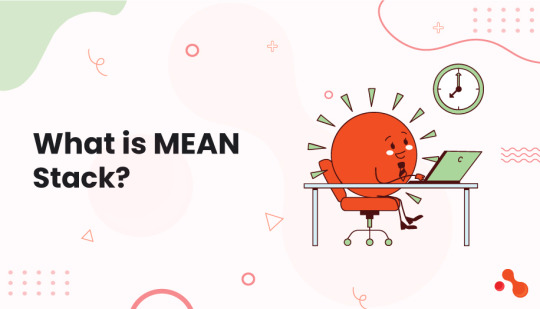
Before understanding the trends of MEAN Stack architecture, it is important to understand what MEAN stack is. MEAN stack is an acronym for MongoDB, Express.js, Angular.js and Node.js. Each component plays a vital role:
MongoDB stores your back-end application's data as JSON (JavaScript Object Notation) documents, making it a document database..
Express.js is a back-end web application framework running on top of Node.js that makes the request-handling processes faster and more flexible.
Angular.js is a front-end web application framework that allows you to extend HTML vocabulary for your application, thus resulting in a more expressive, readable, and quicker approach to the development environment.
Node.js is a platform that is built on Chrome’s JavaScript runtime to easily build a faster, scalable network application.
Now, let’s understand how MEAN Stack Development works.
How does MEAN Stack Development Work?

The MEAN Stack development facilitates full-stack JavaScript development by eliminating the need to learn multiple languages more common in traditional LAMP or a .NET stack. Below is the summary of each component technology and how they are interconnected.
MongoDB
It is an open-source, non-relational database that stores a flexible JSON-like document with dynamic schemas. It is designed to scale rapidly on commodity server hardware and handle a large volume of read-heavy application data in a distributed highly-available cluster.
As a NoSQL database, MongoDB makes it easier for developers to store unstructured or nested application data without the need for complex table schemas enforced by a traditional SQL database.
Express.js
Express.js is a minimal yet very powerful server-side web application framework that runs over Node.js. It simplifies a common web development task like basic routing between application endpoints, connecting a middleware layer for requesting processing, rendering server-side templates for dynamic HTML generation, and handling cookies and sessions.
Express.js provides an MVC architectural foundation for a powerful NOde.js backend and REST API development. The simplicity yet customizability of Express.js helps MEAN stack developers craft a production-ready service.
Angular.js
Angular.js is a mature, stable client-side JavaScript framework to build a responsive UI component with dynamic data binding. It greatly simplifies web application development with a structured MVC code, a reusable component, and a two-way DOM data flow.
For MEAN Stack Development, Angular.js handles all UI rendering and user interactions, communicating with the backend Express+Node layer for data. The declarative nature of AngularJS uses a plain HTML for templates which are paired with powerful directives, thus making it easier to visualize the application UI flows.
Node.js
Node.js is a cross-platform JavaScript runtime to easily build a fast, scalable backend service. It has an event-driven, non-blocking I/O model which works fine for a real-time app that needs to handle a bunch of data and run on multiple devices.
Node.js accommodates the required level of concurrency for modern web apps through its asynchronous execution With Node.js handling a resource-intensive task outside of the browser, a client-side UI is freed up to focus purely on presentation and user experience.
In short, these technologies work together to support full-stack JavaScript development, using JSON to manage data consistently across all parts of the application. This close integration speeds up the process of building modern web applications.
Now, let’s understand a few trends of MEAN Stack Architecture
What are the 10 Trends of MEAN Stack Development?
MEAN Stack Development is an evolving technology with some exciting trends in the lineup that streamlines and enhances web application building.
Let’s understand all of them briefly.
Trend 1: Modular Architecture
MEAN Stack Developers are shifting towards a modular approach, breaking applications into smaller parts that can be managed, tested, and upgraded with ease. This method would speed up development and help the application to grow smoothly as and when the business needs to expand.
Trend 2: Hybrid Mobile Development
With an increased number of users of mobile phones, MEAN stack developers are increasingly using various frameworks like Ionic or React Native. This enables the creation of a mobile app that works across various platforms that use using same code for web applications, thus making development faster and maintenance simpler.
Trend 3: Real-time Application Development
Real-time features are now essential. MEAN stack’s use of Node.js and Socket.io supports live updates and interactions within apps, ideal for chat apps, notifications, or collaborative tools.
Trend 4: Full-stack JavaScript Environment
Using JavaScript from both server-side as well as client-side development would simplify the development process, as it allows the developers to use the same language throughout the application to improve efficiency and minimize errors.
Trend 5: Enhanced Cloud Integration
MEAN stack applications are increasingly integrating with cloud platforms like AWS, Google Cloud, and Microsoft Azure. Node.js’s compatibility with these platforms will enhance the app's performance and scalability when reducing costs.
Trend 6: Performance Optimization
There is a very strong focus on making apps run faster and smoother. Developers use server-side rendering and advanced caching techniques to boost speed and improve user experience, which is crucial to keep users satisfied and improve SEO..
Trend 7: Security Enhancements
As web apps are more complex, security is also becoming crucial. A MEAN stack developer incorporates an advanced security measure like JSON Web Token and an OAuth to ensure safer data transmission and authentication.
Trend 8: Progressive Web Applications
MEAN stack, specifically Angular, is being used to build PWAs that offer a higher-quality user experience with varied features like offline use and background updates.
Trend 9: AI and Machine Learning Integration
AI and machine learning are becoming an important part of any MEAN Stack development, thus allowing for more intelligent and interactive applications. This includes personalized content and advanced data analytics.
Trend 10: GraphQL over REST API
GraphQL is replacing the REST API for many developers because it allows clients to precisely define what data they need, which enhances performance and efficiency.
How can Acquaint Softtech help you in building a Flexible MEAN Stack Architecture
Acquaint Softtech is an Indian company specializing in software development and IT staff augmentation company. We primarily use the Laravel framework for web development, offering custom solutions tailored to clients' needs. We can help you hire mean stack developers that are available at $15 per hour, with an onboarding process that can bring developers on board in just 48 hours. We're expanding into MEAN Stack Development, inviting clients to hire from our skilled team for innovative and efficient projects.
Wrapping Up!
A MEAN stack Development is not just about keeping up but it is also about pushing forward with innovations that improve the scalability, performance, and user experience of a web app. From adopting a modular structure to integrating cutting-edge technology, MEAN stack has become a top choice for remote developers who aim to build a dynamic and efficient web application.
These trends show how flexible and powerful a MEAN stack continues to be in addressing the modern-day needs of web development by using its four elements, i.e. MongoDB, Express.js, Angular.js, and Node.js.
0 notes
Text
Kronos SAP HR Integration

Kronos SAP HR Integration: Streamlining Time and Workforce ManagementKronos and SAP are titans in the enterprise software world. Kronos excels in workforce management solutions, while SAP’s HR modules handle core human resources operations. Integrating these systems allows businesses to optimize time tracking, payroll, and complex workforce data management.Why Integration Matters
Eliminates Data Silos: Integration breaks down information barriers between HR and workforce management. This unified view leads to better decision-making and avoids costly errors due to manual data duplication.
Improved Accuracy: Automated data exchange reduces the potential for manual errors and time/attendance tracking inconsistencies, ensuring accurate payroll processing.
Enhanced Reporting: Consolidated HR and workforce data from both systems provide robust reporting and analytics, giving managers valuable insights into labor costs, productivity, and overtime trends.
Optimized Compliance: Integration helps you stay ahead of labor laws and regulations by streamlining regulatory reporting on work hours, leave, and other compliance-related data.
Methods of Integration
Pre-packaged Integration: SAP offers pre-built integration solutions to connect Kronos Workforce Central with SAP SuccessFactors Employee Central. This can simplify deployment and minimize customization.
Middleware Solutions: Using enterprise-grade integration platforms like SAP Cloud Platform Integration (CPI) or third-party providers (e.g., Dell Boomi, Tray.io) allows for robust data transformation, mapping, and management.
Custom-built Integrations: For unique scenarios, developers can create custom integrations, often using APIs that Kronos and SAP expose, enabling a tightly tailored and specific integration.
Key Integration Components
Employee Master Data: Employee records created in SAP HR must seamlessly flow into Kronos to establish schedules, timekeeping rules, and payroll mapping.
Time and Attendance Data: Punch data, absence information, and over time from Kronos must be efficiently transferred to SAP HR for accurate payroll processing and compliance management.
Labor Costs and Analytics: The ability to push detailed labor data from Kronos back into SAP provides valuable insights for budgeting, cost control, and strategic workforce planning.
Considerations for Success
Strategic Alignment: Define clear business objectives and desired outcomes of the integration.
Data Mapping: Plan how data fields align between both systems to ensure seamless data exchange.
Change Management: Proactively manage changes within your organization, ensuring proper training and adoption across teams using both systems.
Testing: Thorough testing in a non-production environment is crucial to identify and resolve potential issues before the live rollout.
Ongoing Maintenance: Establish processes for regular monitoring, support, and upgrades of the integration environment to maintain stability over time.
The Path to a Seamless IntegrationIntegrating Kronos and SAP HR is a strategic investment that offers significant benefits. By carefully considering the methods, key components, and success factors, organizations can achieve:
Reduced administrative burden
Streamlined workforce management processes
Enhanced financial and compliance control over labor-related operations.
If you’re looking to unlock the potential of this integration in your organization, it’s advisable to consult with experts who specialize in both Kronos and SAP HR. This will ensure a smooth implementation tailored to your specific needs.
youtube
You can find more information about SAP HR in this SAP HR Link
Conclusion:
Unogeeks is the No.1 IT Training Institute for SAP HR Training. Anyone Disagree? Please drop in a comment
You can check out our other latest blogs on SAP HR here – SAP HR Blogs
You can check out our Best In Class SAP HR Details here – SAP HR Training
———————————-
For Training inquiries:
Call/Whatsapp: +91 73960 33555
Mail us at: [email protected]
Our Website ➜ https://unogeeks.com
Follow us:
Instagram: https://www.instagram.com/unogeeks
Facebook: https://www.facebook.com/UnogeeksSoftwareTrainingInstitute
Twitter: https://twitter.com/unogeeks
1 note
·
View note